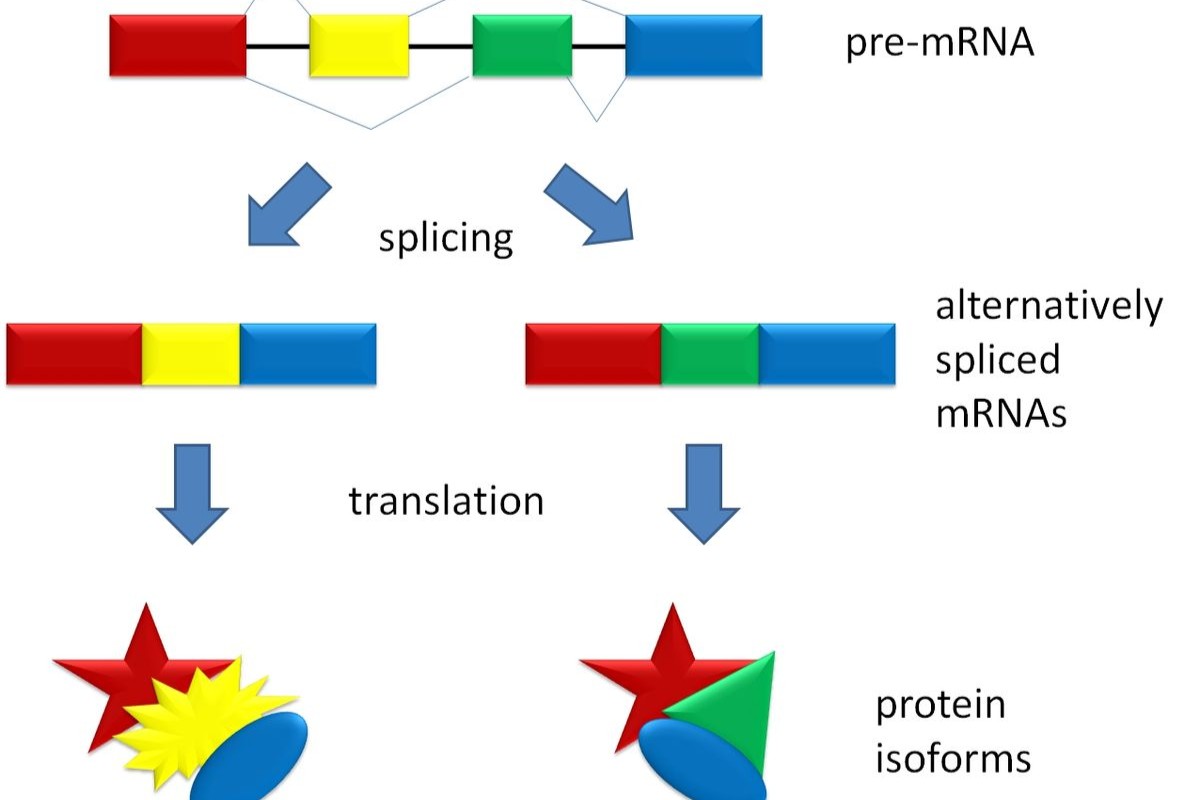
RNA splicing is a crucial process in gene expression, where non-coding regions, called introns, are removed from a pre-mRNA transcript, and the remaining coding regions, called exons, are joined together. This process ensures that the mRNA can be translated into a functional protein. But why is RNA splicing so important? It allows for the generation of multiple protein variants from a single gene, increasing the diversity of proteins that a cell can produce. This flexibility is vital for complex organisms, enabling them to adapt and respond to various environmental and developmental cues. Additionally, errors in RNA splicing can lead to diseases, making it a significant area of study in medical research. Understanding RNA splicing can provide insights into genetic disorders and potential therapeutic approaches.
What is RNA Splicing?
RNA splicing is a crucial process in gene expression. It involves the removal of non-coding regions, known as introns, from a pre-mRNA transcript. The remaining coding regions, called exons, are then joined together to form a mature mRNA molecule that can be translated into a protein.
- RNA splicing occurs in the nucleus of eukaryotic cells.
- Introns are the non-coding regions removed during RNA splicing.
- Exons are the coding regions that remain after splicing.
- The splicing process is catalyzed by a complex called the spliceosome.
- The spliceosome is composed of small nuclear RNAs (snRNAs) and proteins.
Importance of RNA Splicing
RNA splicing is essential for generating the diversity of proteins needed for various cellular functions. It allows a single gene to produce multiple protein variants through a process called alternative splicing.
- Alternative splicing can produce different protein isoforms from a single gene.
- This process increases the diversity of the proteome without increasing the number of genes.
- Errors in RNA splicing can lead to diseases such as cancer and spinal muscular atrophy.
- Splicing factors are proteins that regulate the splicing process.
- Mutations in splicing factors can disrupt normal splicing and cause disease.
Mechanism of RNA Splicing
The splicing process involves several steps, including the recognition of splice sites, the removal of introns, and the ligation of exons. Each step is tightly regulated to ensure accurate splicing.
- Splice sites are specific sequences at the boundaries of introns and exons.
- The 5' splice site is located at the beginning of an intron.
- The 3' splice site is located at the end of an intron.
- A branch point sequence within the intron is crucial for splicing.
- The spliceosome assembles on the pre-mRNA at the splice sites and branch point.
Types of RNA Splicing
There are different types of RNA splicing, including constitutive splicing and alternative splicing. Each type plays a unique role in gene expression.
- Constitutive splicing removes all introns and joins all exons in a pre-mRNA.
- Alternative splicing can skip exons, include introns, or use different splice sites.
- Exon skipping is a common form of alternative splicing.
- Intron retention occurs when an intron is not removed during splicing.
- Mutually exclusive exons are exons that are never included together in the same mRNA.
RNA Splicing and Evolution
RNA splicing has played a significant role in the evolution of complex organisms. It allows for the generation of new proteins and functions without the need for new genes.
- Splicing enables the evolution of new protein functions.
- Alternative splicing can create proteins with new or modified functions.
- The complexity of splicing correlates with organismal complexity.
- Splicing patterns can evolve rapidly, leading to species-specific differences.
- Some viruses exploit splicing to produce multiple proteins from a single gene.
Technological Advances in RNA Splicing Research
Advances in technology have allowed scientists to study RNA splicing in greater detail. These technologies have provided insights into the mechanisms and regulation of splicing.
- RNA sequencing (RNA-seq) is used to study splicing patterns.
- CRISPR-Cas9 can be used to edit splice sites and study their function.
- Splicing reporters are used to monitor splicing events in real-time.
- Bioinformatics tools help predict splicing outcomes from DNA sequences.
- Single-cell RNA sequencing reveals splicing differences between individual cells.
RNA Splicing in Medicine
Understanding RNA splicing has important implications for medicine. It can lead to the development of new therapies for diseases caused by splicing defects.
- Antisense oligonucleotides can correct splicing defects in certain diseases.
- Splicing modulators are drugs that can alter splicing patterns.
- Gene therapy approaches aim to correct splicing defects at the genetic level.
RNA Splicing: A Vital Process
RNA splicing is crucial for gene expression. It allows cells to produce different proteins from a single gene, adding versatility to our genetic code. Without this process, many proteins essential for life wouldn't be made. Splicing errors can lead to diseases, highlighting its importance in health and disease research.
Understanding RNA splicing helps scientists develop treatments for genetic disorders. It's a key area in biotechnology and medicine, offering potential for new therapies. Researchers continue to uncover its complexities, revealing more about how our genes function.
In summary, RNA splicing is a fundamental biological process with significant implications for health and disease. Its study not only advances our knowledge of genetics but also opens doors to innovative medical treatments. Keeping up with RNA splicing research is essential for anyone interested in genetics and biotechnology.
Was this page helpful?
Our commitment to delivering trustworthy and engaging content is at the heart of what we do. Each fact on our site is contributed by real users like you, bringing a wealth of diverse insights and information. To ensure the highest standards of accuracy and reliability, our dedicated editors meticulously review each submission. This process guarantees that the facts we share are not only fascinating but also credible. Trust in our commitment to quality and authenticity as you explore and learn with us.
